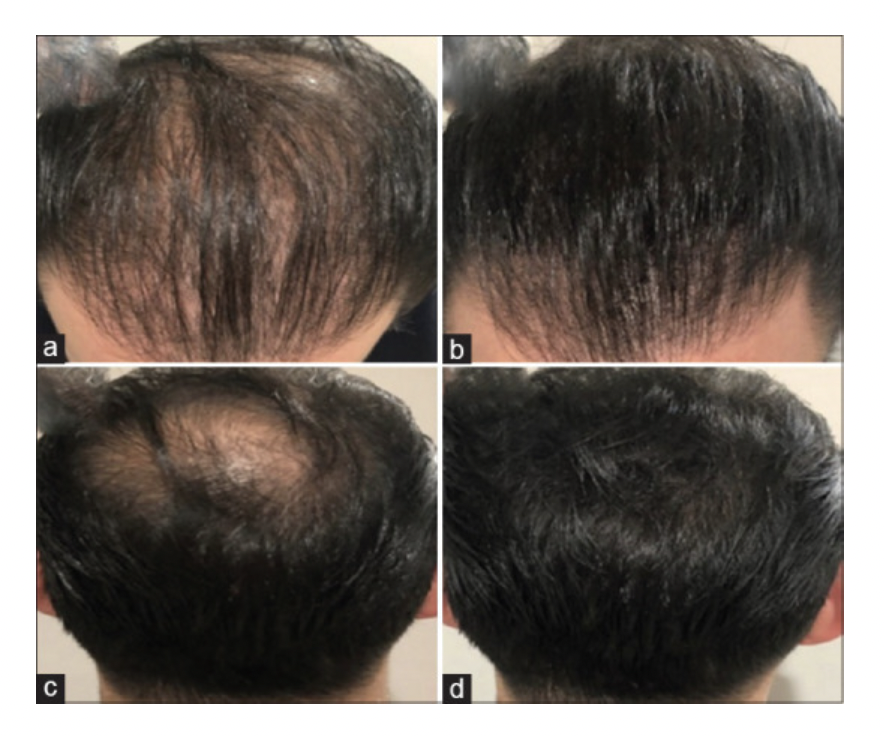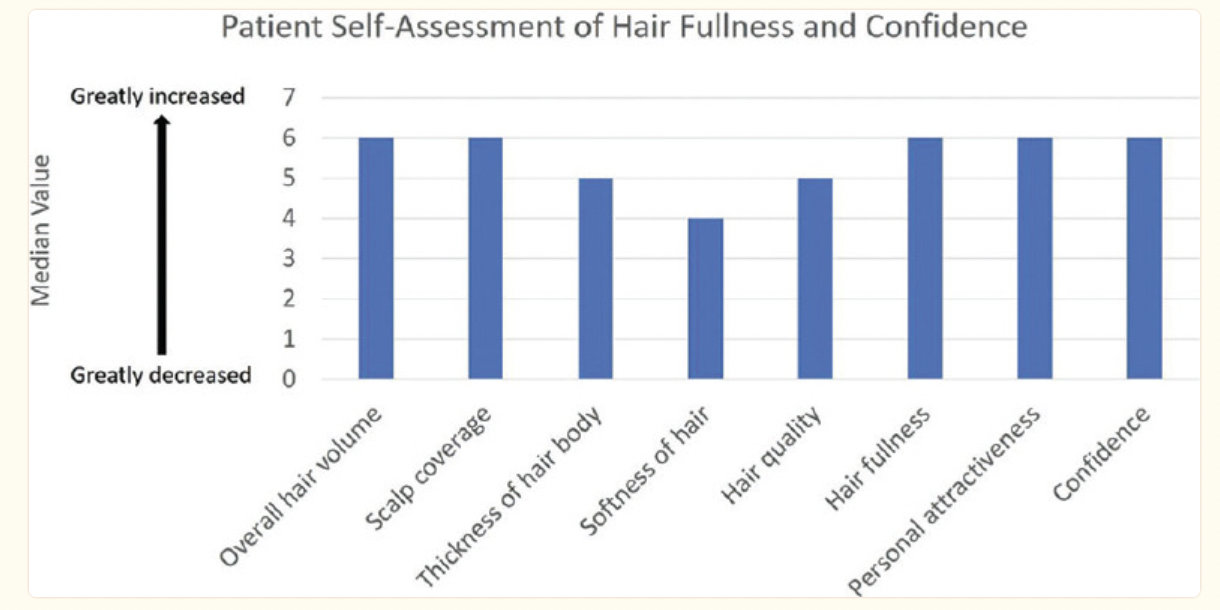Study of hair Fibers Supports Beneficial Role
Hair fiber fillers are widely used as methods to camouflage hair loss. These fibers are often made of keratin including wool or rice keratin. Other materials are possible too. These fibers are positively charged and bind to negatively charged vellus hairs on the scalp. We published a helpful article many years ago about scalp camouflage.
The benefits of scalp camouflage are clear. A large proportion of patients who use them find they help camouflage hair loss and are safe and effective. They help reduce the appearance of hair loss and improve self esteem.
See prior article “Hair Loss Camouflaging Agents Improve Self Esteem and Appearance”
Babadjouni A et al 2022
In a new study by Babadjouni A et al, authors set out to evaluate patient patient experience and satisfaction, 90 days following use of hair fibers to camouflage hair loss. The fibers used in this study were Toppik™ hair fibers.
Fiber color was matched to patients' current hair color from a selection from 10 available shades, including black, light brown, medium brown, dark brown, light blonde, medium blonde, dark blonde, auburn, gray, and white. After 90 days of topical fiber application at the patients' discretion, patients were asked to complete various questionnaires.
The study recruited 40 subjects, including 20 men and 20 women). A total of 92.5% of the patients were satisfied that the fibers accurately matched their hair color. The fiber product was easy to use, with most patients reporting application time was <5 min (87.5%).
Physician assessments conducted to identify contact or irritant adverse effects demonstrated only one case of erythema. There was no reported scalp erythema, scaling, and pustules in 39/40 patients. 1 in 40 (2.5 %) had inflammation.
Patient Satisfaction
Survey results showed that patients were satisfied with the use of fibers. Most found them easy to use, washed off easily, did a good job camouflaging hair loss and helped them feel more confident. On a rating scale of 1 to 5, patients gave an average rating in these categories of 4.3 to 4.6. Ratings ranged from 1 to 5 indicating that not all patents like these products and find them helpful.
Table from Arash Babadjouni et al. Patient Satisfaction and Adverse Effects Following the use of Topical Hair Fiber Fillers. Int J Trichology. 2022 May-Jun; 14(3): 97–102. Used with creative commons license. The table shows the generally high rates of satisfaction patient have with use of camouflaging fibers. One should take note that scores are not a perfect 5 and some patients do not share they same level of enthusiasm.
Before and after images of patients using hair fibers to camouflage hair loss. From Arash Babadjouni et al. Patient Satisfaction and Adverse Effects Following the use of Topical Hair Fiber Fillers. Int J Trichology. 2022 May-Jun; 14(3): 97–102. Used with creative commons license.
Using a 7 point scale, authors showed that hair fibers increased scalp coverage, hair fullness, attractiveness and self confidence.
Measures of patient satisfaction 90 days after using hair fibers. The scale used here is from 1 to 7 with scores as follows: 1 (greatly decrease), 2 (moderately decreased), 3 (slightly decreased), 4 (unsure), 5 (slightly increase), 6 (moderately increase), and 7 (greatly increased)From Arash Babadjouni et al. Patient Satisfaction and Adverse Effects Following the use of Topical Hair Fiber Fillers. Int J Trichology. 2022 May-Jun; 14(3): 97–102. Used with creative commons license.
Side effects of Fibers
As mentioned above, 1 in 40 patients developed redness from fibers. Overall, 90% of the patients did not report itching, prickling, tightness, pain, or burning during and after fiber use. There were patients however who felt that there were scalp symptoms that occurred and these appeared to be connected with lifestyle exacerbating factors such as exercise (n = 4), heat exposure (n = 3), and exposure to one of each: dry air, wind, stress, spicy food, and alcohol. Fortunately, there were no serious adverse events reported by patients using hair fibers in this small study.
Conclusion
I really liked this study. These fibers help people camouflage hair loss and help people feel better about themselves. About 1 in 40 might get irritation so we need to watch out for this. Otherwise they seem pretty safe, well tolerated and well liked by a large proportion.
REFERENCE
Babadjouni A et al. Patient Satisfaction and Adverse Effects Following the use of Topical Hair Fiber Fillers. Int J Trichology. 2022 May-Jun; 14(3): 97–102
This article was written by Dr. Jeff Donovan, a Canadian and US board certified dermatologist specializing exclusively in hair loss.




